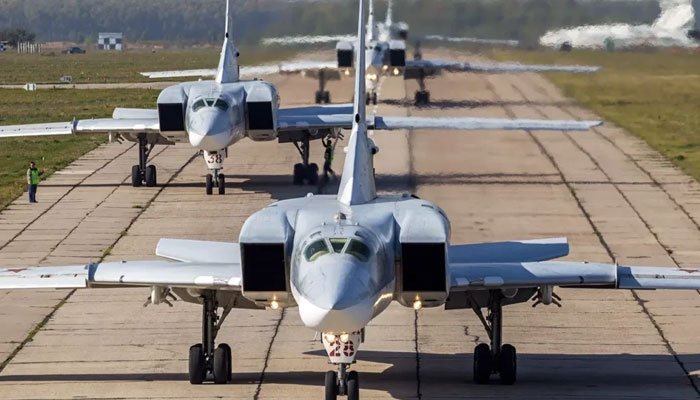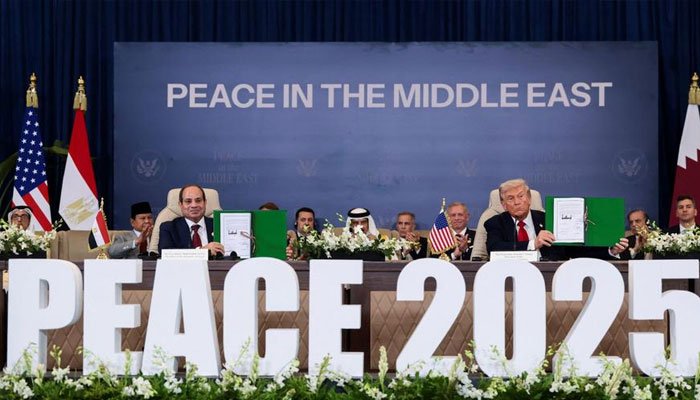Russia’s ~1,200 fighters include Su-30s, Su-35s, and a limited number of Su-57 stealth jets.
Global Air Power 2025: U.S. Leads World’s Largest Air Forces by Military Aircraft Strength. In 2025, the United States continues to dominate global military aviation, operating a fleet of 14,486 military aircraft, far surpassing any other country and even outnumbering the combined total of the next nine largest air forces. This overwhelming strength spans across the U.S. Air Force (USAF), Navy (USN), Army (USA), and Marine Corps (USMC) — each of which, independently, ranks among the largest air forces globally.
According to data compiled by World Population Review, Russia and China retain the second and third positions, with 4,211 and 3,304 total aircraft, respectively. India and Japan complete the top five, with 2,296 and 1,459 aircraft.
2025 Air Power Rankings (By Total Aircraft)
| Rank | Country | Total Aircraft | Fighter Jets | Strategic Bombers | Helicopters | Transport Aircraft |
|---|---|---|---|---|---|---|
| 1 | USA | 14,486 | 2,600+ | 140 | 5,509 | 1,020 |
| 2 | Russia | 4,211 | ~1,200 | 120 | 1,551 | 462 |
| 3 | China | 3,304 | ~1,100 | 209 | 68 | 270 |
| 4 | India | 2,296 | 600+ | 0 | 498 | 282 |
| 5 | Japan | 1,459 | ~300 | 0 | 72 | 44 |
U.S. Branch-Wise Aircraft Distribution:
- US Air Force (USAF): 5,004
- US Army Aviation: 4,333
- US Navy (USN): 2,504
- US Marine Corps (USMC): 1,211

This decentralization gives the U.S. unmatched specialization across mission types, including strategic airlift, close air support, intelligence gathering, and naval aviation — areas where even the largest national air forces struggle to compete.
Fighter Jet Supremacy
The U.S. boasts over 2,600 frontline fighters, including fifth-generation stealth aircraft like the F-22 Raptor and F-35 Lightning II, making it not just the largest but the most technologically advanced fighter fleet in the world.
In contrast:
- Russia’s ~1,200 fighters include Su-30s, Su-35s, and a limited number of Su-57 stealth jets.
- China operates ~1,100 fighters, led by J-10, J-16, and the emerging J-20 stealth fighters.
- India and Japan maintain mixed fleets that include upgraded legacy aircraft and newly acquired Western jets like the Rafale (India) and F-35 (Japan).
Strategic Bomber Power
Strategic bombers remain the domain of just three nations:
- China leads with 209 bombers, mainly Xian H-6 variants.
- The United States operates 140 bombers, including the stealth B-2 Spirit, B-52 Stratofortress, and B-1B Lancer.
- Russia fields 120 strategic bombers, primarily Tu-95 and Tu-160, many of which are aging Cold War-era aircraft.

Despite China’s numerical lead, U.S. bombers remain superior in stealth, payload, and global reach. Future capabilities like the B-21 Raider, expected to enter service in the late 2020s, will likely extend the U.S. lead even further.
Helicopter Dominance
Helicopter operations are another area of U.S. superiority:
- The U.S. operates 5,509 helicopters, including the AH-64 Apache, UH-60 Black Hawk, CH-47 Chinook, and the unique V-22 Osprey tiltrotor.
- Russia follows with 1,551, led by the Mi-24 Hind and Ka-52 Hokum, though modernization lags.
- India (498) and Japan (72) use U.S.-made Apaches and Chinooks, while China (68) is still expanding its rotary-wing capability.

Global Airlift: U.S. Sets the Gold Standard
When it comes to military transport aircraft, the U.S. Air Force’s 1,020-strong fleet — anchored by the C-17 Globemaster III, C-130 Hercules, and C-5 Galaxy — offers unparalleled logistics and global mobility.
Russia and China maintain large airspaces but significantly trail in global projection capabilities. India and Japan, although well-equipped for regional needs, depend heavily on foreign procurement for strategic lift.
Conclusion: A Widening Gap in 2025
Despite advances by Russia and China, no nation approaches the scale, technology, and global reach of the United States’ military air power in 2025. As others focus on selective modernization, the U.S. continues to invest across all domains of air warfare, including cyber integration, drone swarms, and stealth advancements.
Emerging technologies like unmanned combat aerial vehicles (UCAVs) and hypersonic delivery systems will further shape the balance of air power in the coming decade — but for now, the United States stands alone at the top of global military aviation.





